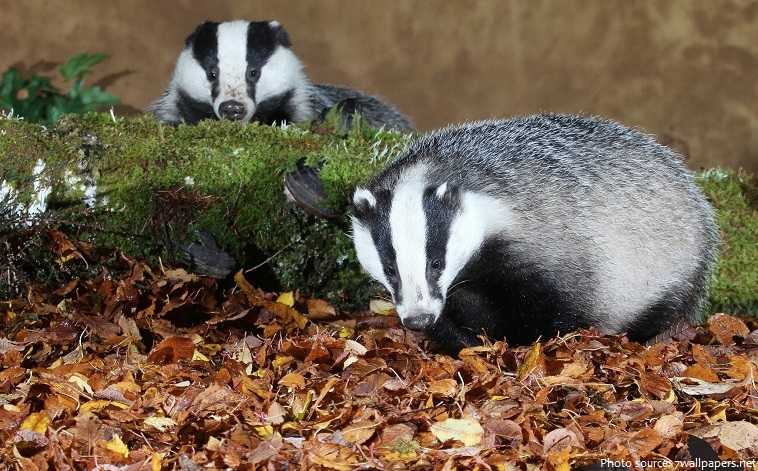October 6 is National Badger Day. You can join Badger groups all around the country to celebrate just how magnificent and important one of our oldest native species is to the British countryside and its people. Check out events going on in your area.
Badgers are found in North America, Ireland, Great Britain and most of Europe. There are species in Japan, China, Indonesia and Malaysia. The honey badger is found in sub-Saharan Africa, the Arabian Desert, Turkmenistan, and India. Badgers prefer to live in dry, open grasslands, fields, and pastures. They are found from high alpine meadows to sea level. The average lifespan in the wild is between 4 and 10 years, but some badgers may live up to 14 years. They have lived to be 26 years old in captivity.
Harper Asprey Wildlife Rescue
Badgers have rather short, fat bodies, with short legs for digging. They have elongated weasel-like heads with small ears. Most badgers have black faces with distinctive white markings, grey bodies which may be mixed with brown, red, black or even yellow, and dark legs with light coloured underbellies. Badgers grow to around 90 centimeters (35 inches) in length including tail. They weigh between 9 to 18 kilograms (18 and 40 pounds).
The behaviour of badgers differs by species, but all shelter underground, living in burrows called setts, which may be very extensive. Some are solitary, moving from home to home, while others are known to form clans called cetes. There are usually 2 – 15 badgers in a cete. Badgers are territorial throughout most of the year. Most territories are about 8 to 10 square kilometers (3 to 4 square miles). The size of the territory might vary somewhat due to the availability of food. There are lots of different types of setts in a territory but the main sett is the biggest. Some main setts are hundreds of years old and have hundreds of entrances too!

The source of the word “badger” is uncertain. The Oxford English Dictionary states it probably derives from “badge” + -ard, referring to the white mark borne like a badge on its forehead, and may date to the early sixteenth century. The French word bêcheur (digger) has also been suggested as a source. A male badger is a boar, a female is a sow, and a young badger is a cub. A badger’s home is called a sett. Badger colonies are often called clans.
